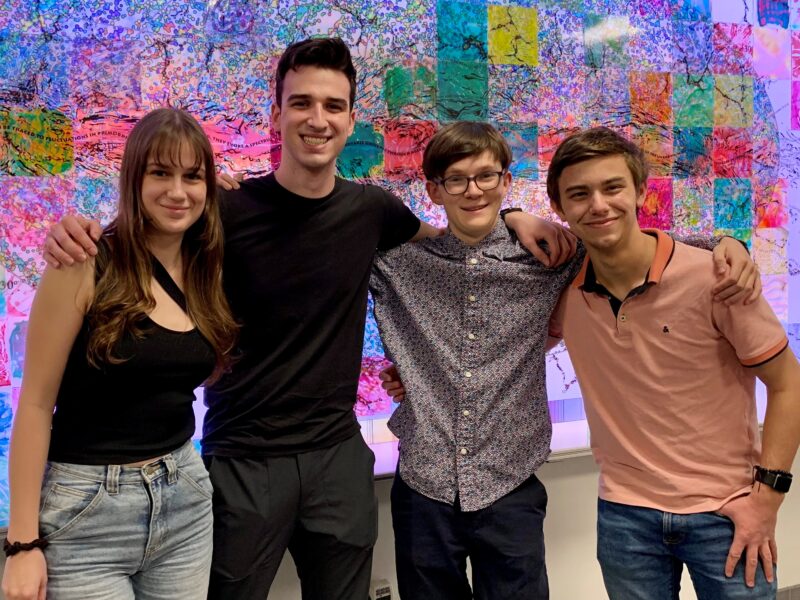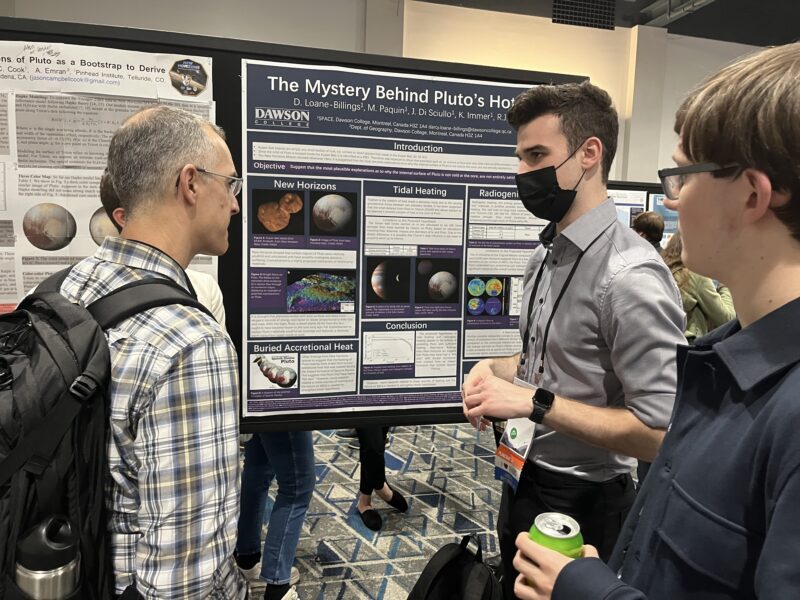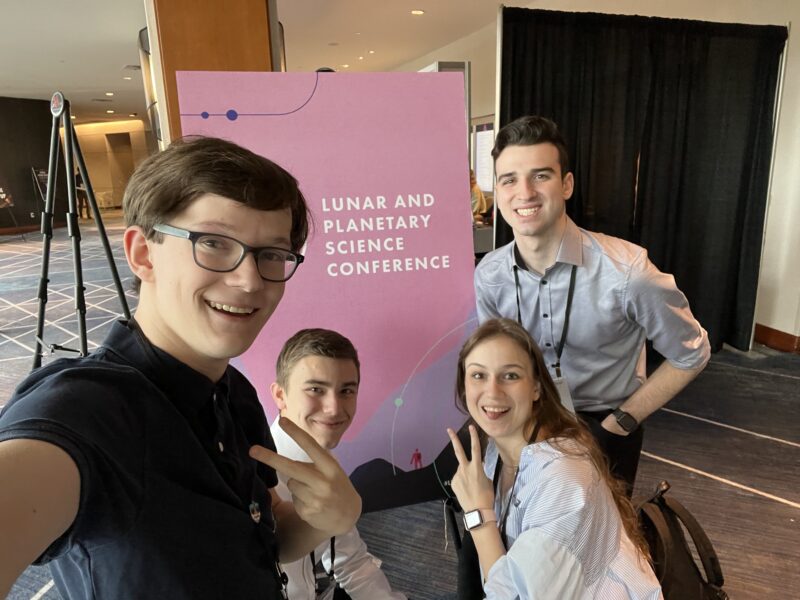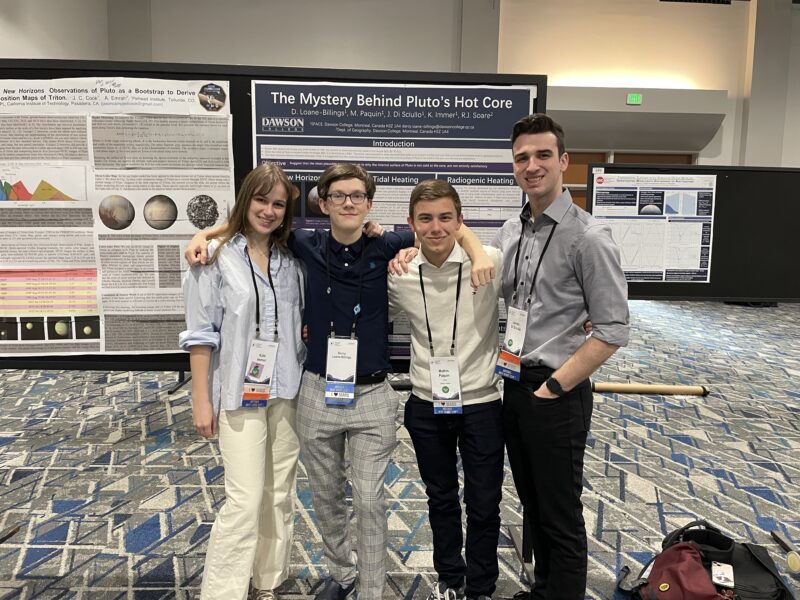Four Dawson students presented abstract at Lunar and Planetary Science conference
When it was time to submit an abstract to the Lunar and Planetary Science Conference in Texas, the Dawson student team was not sure which category described them best.
“I think we are the first CEGEP students to present research at the LPI! Undergraduate was the category closest to us,” said Darcy Loane-Billings (Pure & Applied Science), lead author of the abstract and second-year student.
Meet the team
Along with Darcy, the other members of the team are second-year students: James Di Sciullo (Pure & Applied Science), Kate Immer (Enriched Health Science) and Mathis Paquin (Enriched Health Science). They presented their abstract on March 16 at the conference.

The two co-sponsors of the conference were the Lunar and Planetary Institute and NASA. Many participants were career planetary scientists and others came from universities, business and industry. The four Dawson students’ days at the conference were filled with “learning, relationship building, and an overall great time,” said James. “The conference offered us the ability to broaden our knowledge of the various topics in planetary science and gave us a chance to see experiments and data analysis that are being performed around the world.”
Kate thought their presentation “went wonderfully.” The conference offered the students a “chance to speak to incredibly experienced scientists from NASA headquarters who offered us the possibility to start modelling radiogenic heating on Pluto through an already created software used to model the moon, which is something that was never tried before and could have great potential. […] I thought that this conference was one of the most enriching experiences of my life. We experienced some extraordinary things, like casually holding a piece of Mars and meeting people who can easily be considered as celebrities in their field.
“Overall, I think this trip has taught me two things. Number one: never be afraid to ask questions and speak your mind—those things might get you further than you ever expect. Number two, the only future I could possibly imagine for myself will, one hundred percent, be related to the world of science or research. Therefore, I hope to be able to continue keeping in touch with the people we met at this year’s conference through recent and potentially new project ideas.”
Research began in June
Under the umbrella of Dawson’s SPACE program and Joel Trudeau’s oversight, the group began their research in June. Richard Soare, a Dawson faculty member in Geography with a passion for planetary science, mentored the team.
“Richard told us to go out there and find something new,” Darcy recalled. What they did could take years, but they did it in four months with Richard’s guidance.

The first time they shared their research was at the NASA-sanctioned workshop on Ices in the Solar System: A Volatile-Excursion from Mercury and the Moon to the Kuiper Belt and Beyond, which took place at Dawson in January. The workshop was co-convened by Dawson’s Richard Soare, a published Mars researcher, and Jim Garvin, formerly NASA’s Chief Mars Scientist and currently the Principal Investigator of the DAVINCI Mission to Venus.
The students’ abstract is entitled Pluto: Cold at the Surface, Hot Below, and they presented their poster at an evening poster session Jan. 10. While they were at the ices workshop, they fine tuned their paper “during every break” and submitted it for consideration at the big conference in Texas this March.
Setting a precedent
These kinds of projects push students to take initiative and pursue ambitious projects.
“It is possible if you put enough work and dedication to do expert level research,” Kate said. “This sets a precedent that we are capable.”
There were many “a-ha moments” during the project that helped the students understand why they were learning particular Physics concepts in class.
Science teachers at Dawson are dedicated to creating more experiential learning opportunities like this for students.
Funding for this project was provided by the Dawson Foundation.




